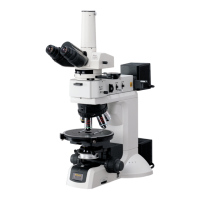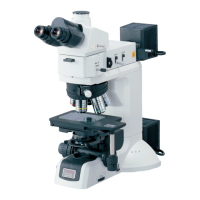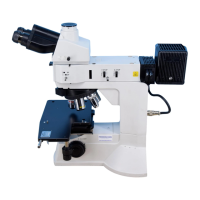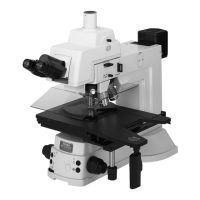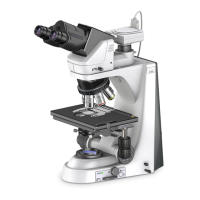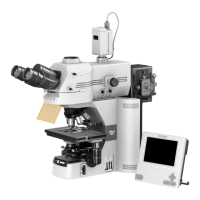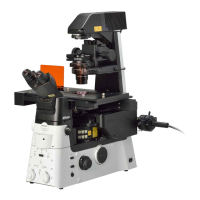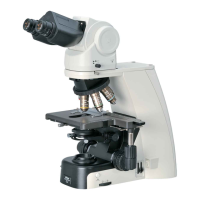36
12
Polarizer Slider
The polarizer slider can be used together with the
analyzer slider to enable the simplified polarization
microscopy. Likewise, the polarizer slider can be
combined with the analyzer slider and DIC slider to
perform DIC microscopy, and with the analyzer slider
and lambda plate slider to perform sensitive
polarization microscopy (with the LV-UEPI2 only).
Placing the polarizer in the optical path
• For the LV-UEPI:
Remove the dummy slider at the right side of the illuminator, and in its place, insert the polarizer
slider with its orientation indication facing toward the eyepieces. (p.51)
• For the LV-UEPI2:
Remove the vertically oriented cover at the right side of the illuminator. Insert the polarizer slider
into the rear slot with its orientation indication facing toward the eyepieces. In the front slot, insert a
dummy slider or lambda plate slider. (p.51)
• Insertion to the optical path:
Pushing the polarizer slider in to the first clickstop position inserts the empty hole into the optical
path. Pushing it further in to the second clickstop position inserts the polarizer into the optical path.
Set the orientation of the polarizer by turning the polarizer rotating ring.
Removing the polarizer out of the optical path
With the polarizer placed in the optical path, pull it out in the right direction to the first clickstop
position. The polarizer has been removed out of the optical path (instead, the empty hole is now in
the optical path).
Adjusting the orientation of the polarizer
Turning the polarizer rotating ring changes the
orientation of the polarizer. Here is how to bring the
polarizer and the analyzer into the crossed Nicols
position.
Place the polarizer and the analyzer in the optical
path. Place a specimen with a flat and plain surface
on the stage and set the microscope for simplified
polarization microscopy.
Remove one eyepiece from the microscope and look
inside the open sleeve. You can see the objective’s
pupil as a bright circle.
Turn the polarizer rotating ring in either direction
until the dark cross appears in the viewfield. This is
the crossed Nicols position.
(Matching the marks on the polarizer rotation dial as
shown in
1
on the illustration will bring about the
crossed Nicols position as well.)
JAPAN
First clickstop position
Second clickstop position
Polarizer
Polarizer rotating ring
F
.
STOP A
.
STOP
BF
DF
1
0
0
0
0
1
0
0
IN
O
U
T
1
2
2
1
Polarizer orientation
Lateral
direction
Vertical
direction
Dark cross
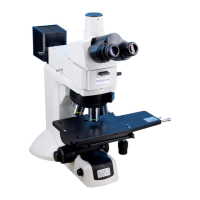
